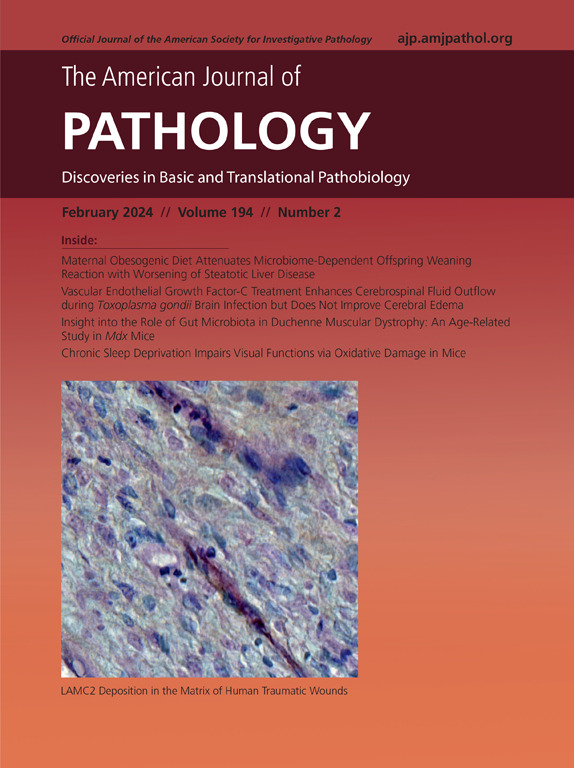超越氧化还原调节:TXNIP在肾脏疾病发病机制和治疗靶向中的新作用。
IF 4.7
2区 医学
Q1 PATHOLOGY
引用次数: 0
摘要
细胞应激条件,如氧化和内质网(ER)应激有助于各种肾脏疾病的发展。氧化应激是由活性氧(ROS)积累引起的,并由谷胱甘肽和硫氧还蛋白(Trx)抗氧化系统微妙地减轻。硫氧还蛋白相互作用蛋白(TXNIP)最初被确定为trx结合伙伴,在氧化和内质网应激下被显著上调和激活。TXNIP的功能与其亚细胞定位密切相关。在正常生理条件下,TXNIP主要定位于细胞核。当暴露于ROS或内质网应激时,TXNIP迁移到线粒体并与线粒体Trx2结合,释放trx拴系的凋亡信号调节激酶1 (ASK1)并激活ASK1介导的细胞凋亡。氧化应激和内质网应激也与自噬密切相关。TXNIP可以根据不同的情况促进或抑制自噬。虽然最近的研究强调了TXNIP在肾脏疾病的病因和进展中不可或缺的作用,但TXNIP靶向治疗仍然缺失。本文将从以下几个方面进行综述:(1)氧化应激和内质网应激;(2)细胞应激过程中TXNIP的调控及功能;(3) TXNIP参与应激调节的自噬;(4) TXNIP在肾病综合征、糖尿病肾病、慢性肾病、急性肾损伤、肾老化等肾脏疾病中的应用;(5)针对TXNIP治疗肾脏疾病的新药物,综述了抑制TXNIP的化合物和基于rna的治疗方法的最新进展。本文章由计算机程序翻译,如有差异,请以英文原文为准。
Beyond Redox Regulation
Cellular stress, such as oxidative and endoplasmic reticulum (ER) stresses, contributes to the development of various kidney diseases. Oxidative stress is prompted by reactive oxygen species accumulation and delicately mitigated by glutathione and thioredoxin (Trx) antioxidant systems. Initially identified as a Trx-binding partner, Trx-interacting protein (TXNIP) is significantly up-regulated and activated by oxidative and ER stresses. The function of TXNIP is closely linked to its subcellular localizations. Under normal physiological conditions, TXNIP primarily localizes to the nucleus. When exposed to reactive oxygen species or ER stress, TXNIP relocates to mitochondria and binds to mitochondrial Trx2, which releases Trx-tethered apoptosis signal-regulating kinase 1 and activates apoptosis signal-regulating kinase 1–mediated apoptosis. Oxidative and ER stresses are also closely associated with autophagy. TXNIP can promote or inhibit autophagy depending on context. Although recent studies have highlighted the indispensable role of TXNIP in the etiology and progression of kidney disease, TXNIP-targeted therapy is still missing. This review focuses on the following: i) oxidative and ER stresses; ii) regulation and function of TXNIP during cellular stress; iii) TXNIP in stress-regulated autophagy; iv) TXNIP in kidney diseases (nephrotic syndrome, diabetic nephropathy and chronic kidney disease, acute kidney injury, and kidney aging); and v) novel treatment agents targeting TXNIP in kidney disease. Current advances in chemical compounds and RNA-based therapy suppressing TXNIP are also reviewed.
求助全文
通过发布文献求助,成功后即可免费获取论文全文。
去求助
来源期刊
CiteScore
11.40
自引率
0.00%
发文量
178
审稿时长
30 days
期刊介绍:
The American Journal of Pathology, official journal of the American Society for Investigative Pathology, published by Elsevier, Inc., seeks high-quality original research reports, reviews, and commentaries related to the molecular and cellular basis of disease. The editors will consider basic, translational, and clinical investigations that directly address mechanisms of pathogenesis or provide a foundation for future mechanistic inquiries. Examples of such foundational investigations include data mining, identification of biomarkers, molecular pathology, and discovery research. Foundational studies that incorporate deep learning and artificial intelligence are also welcome. High priority is given to studies of human disease and relevant experimental models using molecular, cellular, and organismal approaches.

 求助内容:
求助内容: 应助结果提醒方式:
应助结果提醒方式:


